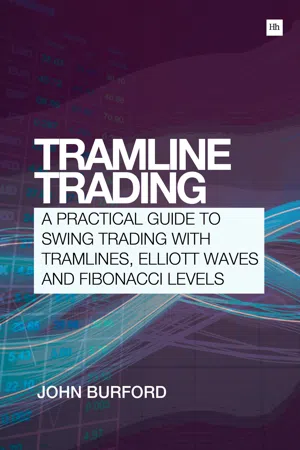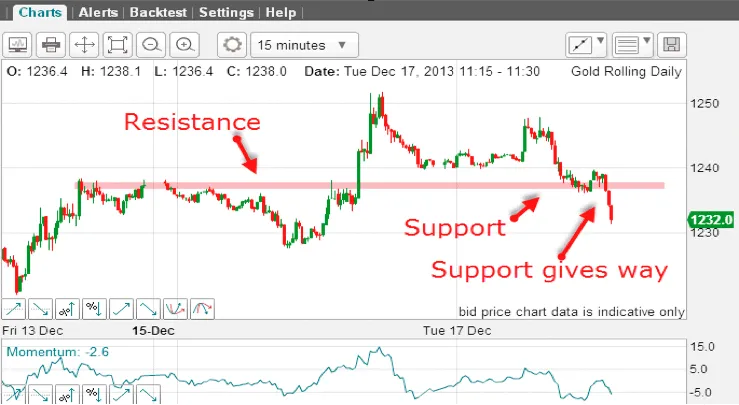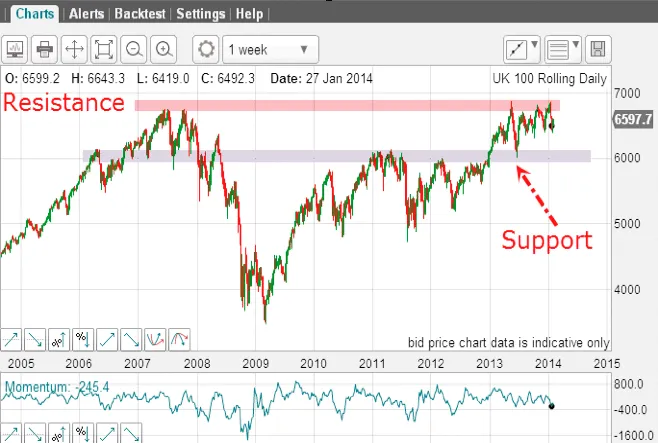
Tramline Trading
A practical guide to swing trading with tramlines, Elliott Waves and Fibonacci levels
- English
- ePUB (mobile friendly)
- Available on iOS & Android
Tramline Trading
A practical guide to swing trading with tramlines, Elliott Waves and Fibonacci levels
About this book
A straightforward, winning trading methodThere are certain universal chart patterns that are traced out time and time again by markets - these patterns have stood the test of time and can be instantly recognised by a skilled trader. When you learn how to spot these patterns and use them to forecast market action you have the basis of a winning trading method. Tramline Trading is a complete practical guide that shows you precisely how to do this.The Tramline Trading Method described here is a simple and complete system which combines Fibonacci levels, basic Elliott Wave Theory and John Burford's original tramline concepts. It is based on a small number of highly reliable patterns and can be put to use in any market. Every detail of how to put the method into practice is revealed, including how to spot developing patterns for high-probability, low-risk trades, where to place entry orders and stop losses, and the five best setups to look out for. Full colour chart illustrations are used throughout.As well as describing the method in full detail, John Burford also provides day-by-day trading diaries for four-month trading campaigns in gold and the Dow. These invaluable diaries show the mind of the trader as he surveys real-time market action and provide vital insight into how the trading method is used in real trading.If you are looking for a proven trading method that is reliable and easy to execute then Tramline Trading will put you on the right track. It is the essential new guide to a winning trading approach.
Frequently asked questions
- Essential is ideal for learners and professionals who enjoy exploring a wide range of subjects. Access the Essential Library with 800,000+ trusted titles and best-sellers across business, personal growth, and the humanities. Includes unlimited reading time and Standard Read Aloud voice.
- Complete: Perfect for advanced learners and researchers needing full, unrestricted access. Unlock 1.4M+ books across hundreds of subjects, including academic and specialized titles. The Complete Plan also includes advanced features like Premium Read Aloud and Research Assistant.
Please note we cannot support devices running on iOS 13 and Android 7 or earlier. Learn more about using the app.
Information
Part 1: The Tramline Trading Method
Chapter 1: My Charting Methods
- Support and resistance
- Trendlines
- My favourite chart patterns
- Momentum
1.1 Support and resistance
- horizontal support/resistance levels in congestion zones
- trendlines (sloping lines of support/resistance)
- Fibonacci retraces
- chart support/resistance
1. Horizontal support/resistance levels
Figure 1.1.1

Figure 1.1.2

Figure 1.1.3

2. Trendlines (sloping support/resistance)
Table of contents
- Cover
- Publishing details
- Follow us, add us, like us
- The Tramline Trading Alert Service
- About the author
- Acknowledgements
- Preface
- Introduction
- Part 1: The Tramline Trading Method
- Part 2: How To Trade The Tramline Method
- Part 3: My Trading Diary